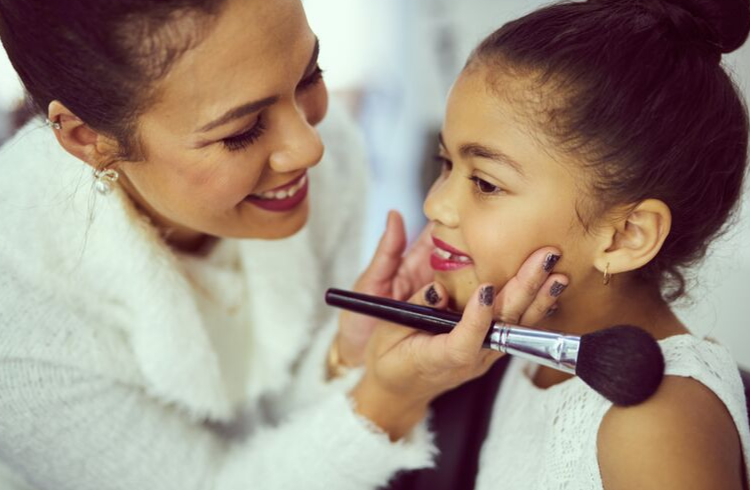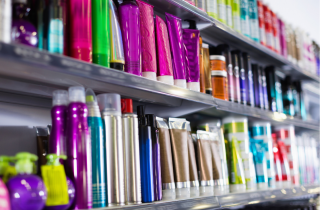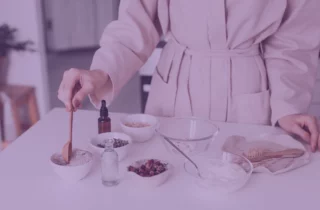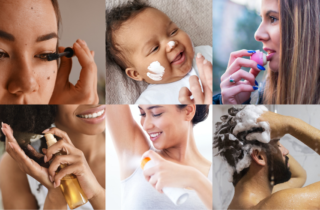Toxic-Free Beauty Act
At a Glance
The Toxic-Free Beauty Act will likely be re-introduced and assigned a new bill number in the 118th Congress in mid-May 2025.
This bill would ban 11 of the most hazardous chemicals from beauty and personal care products sold in the U.S.
Banning the worst first: These toxic chemicals include mercury, formaldehyde, parabens, phthalates, and phenylenediamines (hair dye chemicals). CA, MD, and the European Union already ban these chemicals from cosmetic products.
This bill is part of the Safer Beauty Bill Package, four bills to make beauty and personal care products safer for all by getting the toxic chemicals out, reducing hazardous chemical exposures for the most vulnerable, making fragrance disclosure the new industry standard, and requiring supply chain transparency.

Summary
The Toxic-Free Beauty Act would prohibit using 11 hazardous chemicals from beauty and personal care products sold in the U.S. that the European Union, California, and Maryland already ban.
Background
Thousands of industrial chemicals are used to create the personal care and beauty products that consumers and professional nail, hair, and beauty salon workers use daily. Some of these chemicals have been linked to serious harm to human health and the environment. This bill would ban the worst of these harmful chemicals:
- The two phthalates– DBP and DEHP –found in nail polish and fragrance are linked to birth defects, breast cancer, and endocrine disruption.
- Formaldehyde, paraformaldehyde, and methylene glycol (3 different kinds of formaldehyde) are used in hair straightening/hair smoothing products. Quaterniun-15 (a formaldehyde-releasing preservative) can be found in body wash, makeup, and hair products, including baby shampoo. These chemicals are linked to cancer, skin irritation, and respiratory harm.
- Isobutylparaben and isopropylparaben are found in sunscreens, lotions, eyeliner, blush, and hair products. Parabens are hormonally active chemicals linked to breast cancer, reproductive harm, and endocrine disruption.
- M-Phenylenediamine and o-Phenylenediamine are chemicals used in hair dye linked to skin sensitization, cancer, mutagenicity, and organ system toxicity.
- Mercury – although banned in the U.S. except as a preservative in products around the eyes – can still be found in skin-lightening creams, beauty and antiseptic soaps, and lotions. Mercury can negatively impact the brain and nervous system.
Women of color and professional salon workers are most at risk for hazardous exposures because of the toxic chemicals in the beauty products marketed to them or commonly found in their workplaces. Other vulnerable populations include infants and children, whose bodies are constantly undergoing sensitive periods of development, pregnant women, and the elderly.
Problem
The EU has banned nearly 1,700 chemicals from beauty and personal care products. More than 40 other nations have stricter cosmetic safety regulations than the U.S. In stark contrast to the progress made by the rest of the world, the FDA, to date, has only banned or restricted eleven ingredients from cosmetics.[i]
Current market trends and state laws
Many multinational companies, major retailers like Target, CVS, Walgreens, Rite Aid, and hundreds of clean cosmetic companies have voluntarily added many of these chemicals to the Do Not Use list of chemicals. However, other large and small companies continue to sell beauty and personal care products containing these toxic chemicals simply because they can.
The federal Toxic-Free Beauty Act builds upon the proactive measures taken by seven states—CA, NY, MD, MN, ME, WA, and CO—to ban harmful chemicals from beauty and personal care products. It serves as a crucial step toward getting the worst-of-the-worst toxic chemicals out of cosmetics.
Also, the Toxic-Free Beauty Act would ban the same 11 chemicals that the European Union, California, and Maryland already prohibit (California Toxics-Free Cosmetics Act of 2020, and Maryland passed an identical law in 2021).
Solution
The Toxic-Free Beauty Act prohibits the use of the following chemicals in both consumer beauty and personal care and professional salon products sold in the United States:
- Dibutyl phthalate (DBP)
- Diethylhexyl phthalate (DEHP)
- Formaldehyde
- Paraformaldehyde
- Methylene glycol
- Quaternium-15
- Mercury
- Isobutylparaben
- Isopropylparaben
- m-Phenylenediamine and its salts
- o-Phenylenediamine and its salts
Products containing any of these prohibited chemicals would be deemed adulterated by the FDA.[ii]
For more information, contact:
Janet Nudelman, Breast Cancer Prevention Partners, Janet@BCPP.org
[i] Food & Drug Admin., Prohibited & Restricted Ingredients, https://www.fda.gov/cosmetics/guidanceregulation/lawsregulations/ucm127406.htm.
[ii] Section 601(a) of the FDCA (21 U.S.C. § 361(a)) states that a cosmetic is deemed adulterated if it “bears or contains any poisonous or deleterious substance which may render it injurious to users under the conditions of use prescribed in the labeling thereof, or under such conditions of use as are customary or usual.”
Types: Fact Sheet





